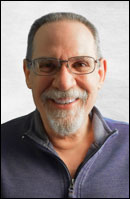Download Brochure
 “I have been using the PCB Piezotronics phantom powered microphones for test and measurement as well as recording. They are accurate, uncolored, quiet, and dynamic. Their distortion is the lowest of any microphones I’ve tested, allowing remarkably clean, detailed recording quality. Polar patterns are smooth. The sensitivity is extremely flat for wide frequency ranges, even with changes in temperature and humidity in the recording venue, bringing lab-grade quality to the audio market.”
“I have been using the PCB Piezotronics phantom powered microphones for test and measurement as well as recording. They are accurate, uncolored, quiet, and dynamic. Their distortion is the lowest of any microphones I’ve tested, allowing remarkably clean, detailed recording quality. Polar patterns are smooth. The sensitivity is extremely flat for wide frequency ranges, even with changes in temperature and humidity in the recording venue, bringing lab-grade quality to the audio market.”
Stuart Yaniger, Ph.D.
Regular Contributor to
AudioXpress
SYclotron Audio Principal